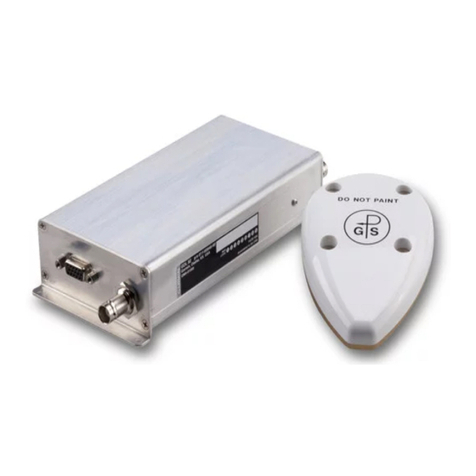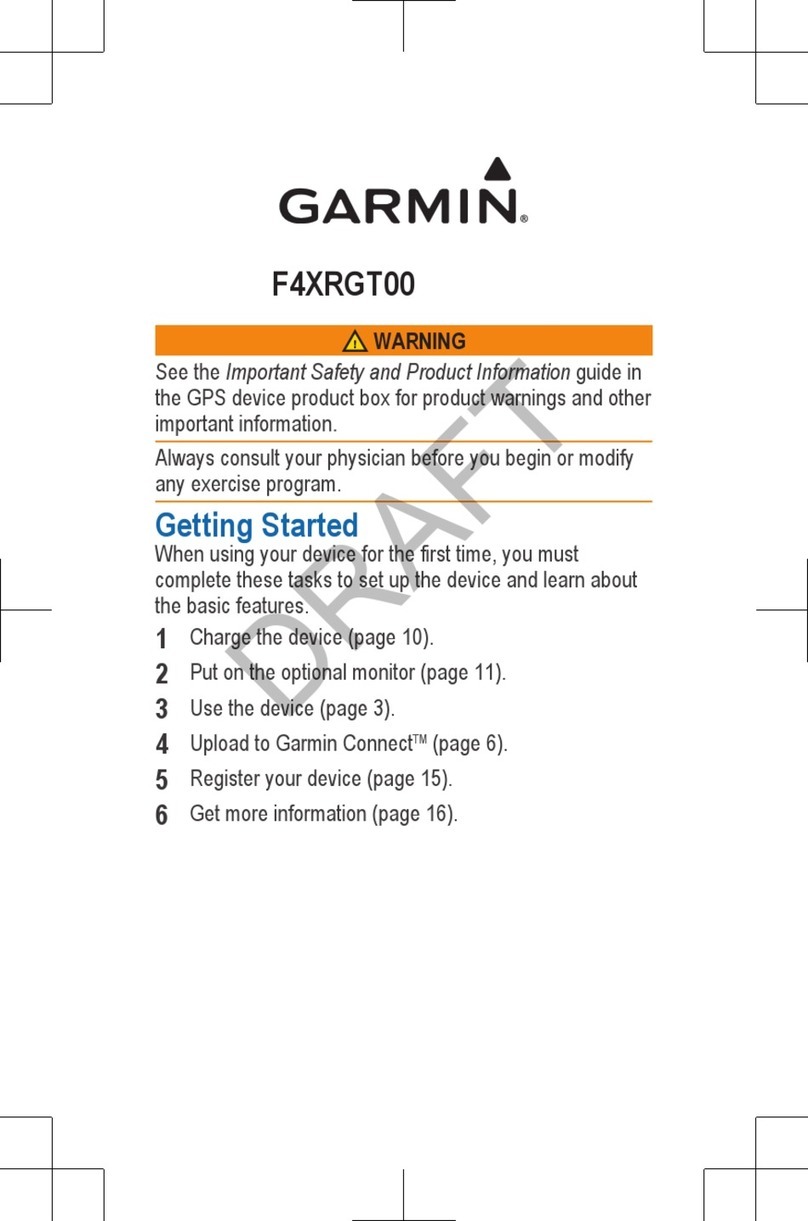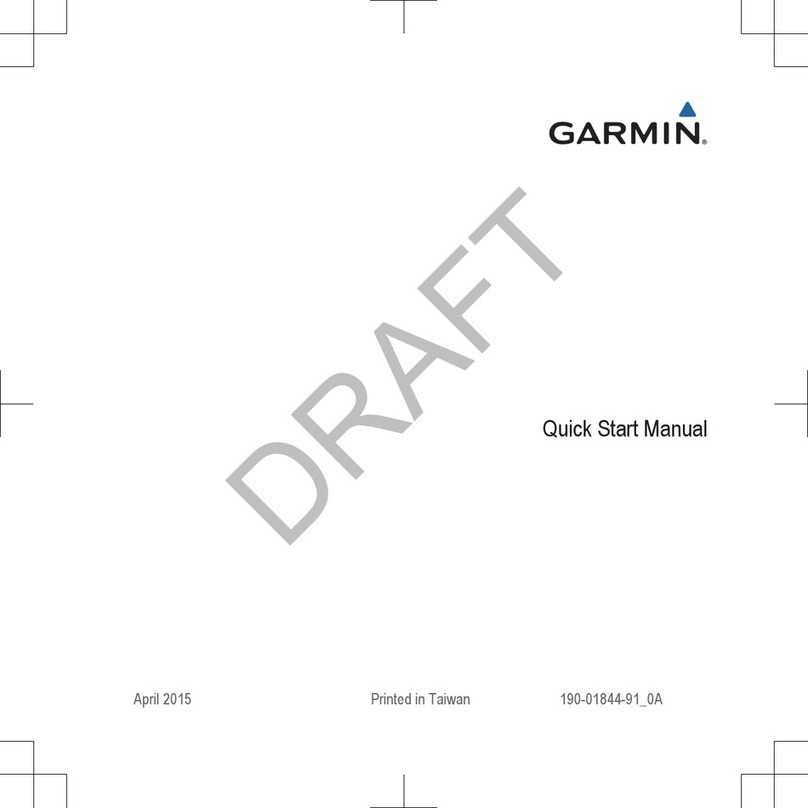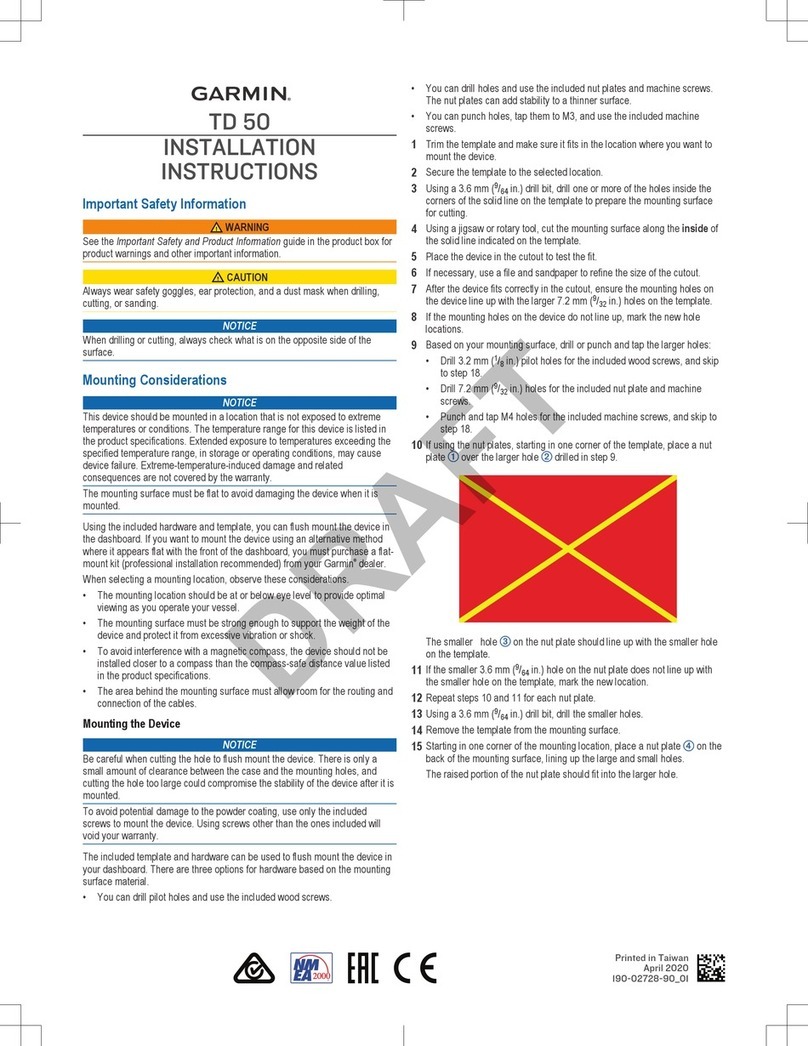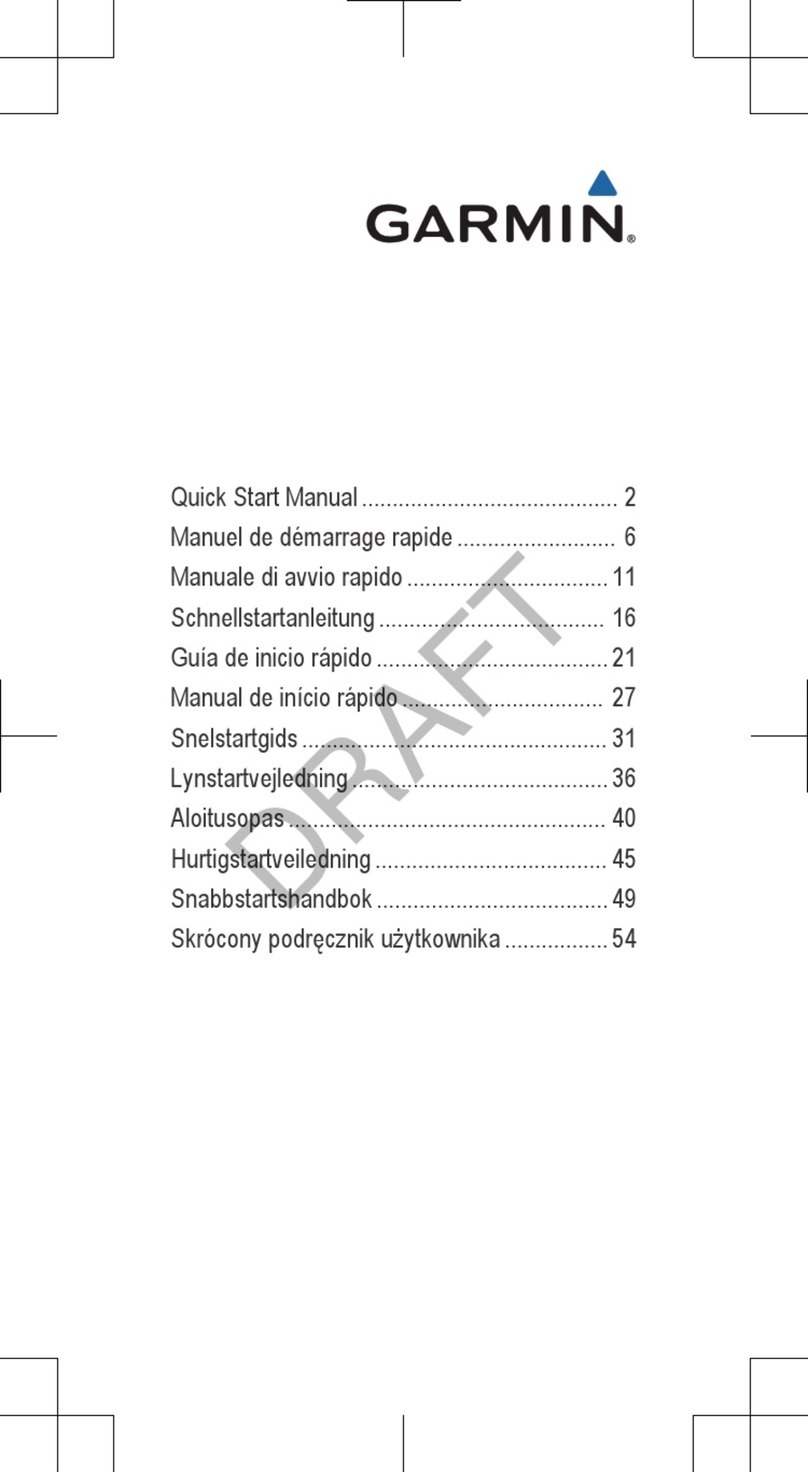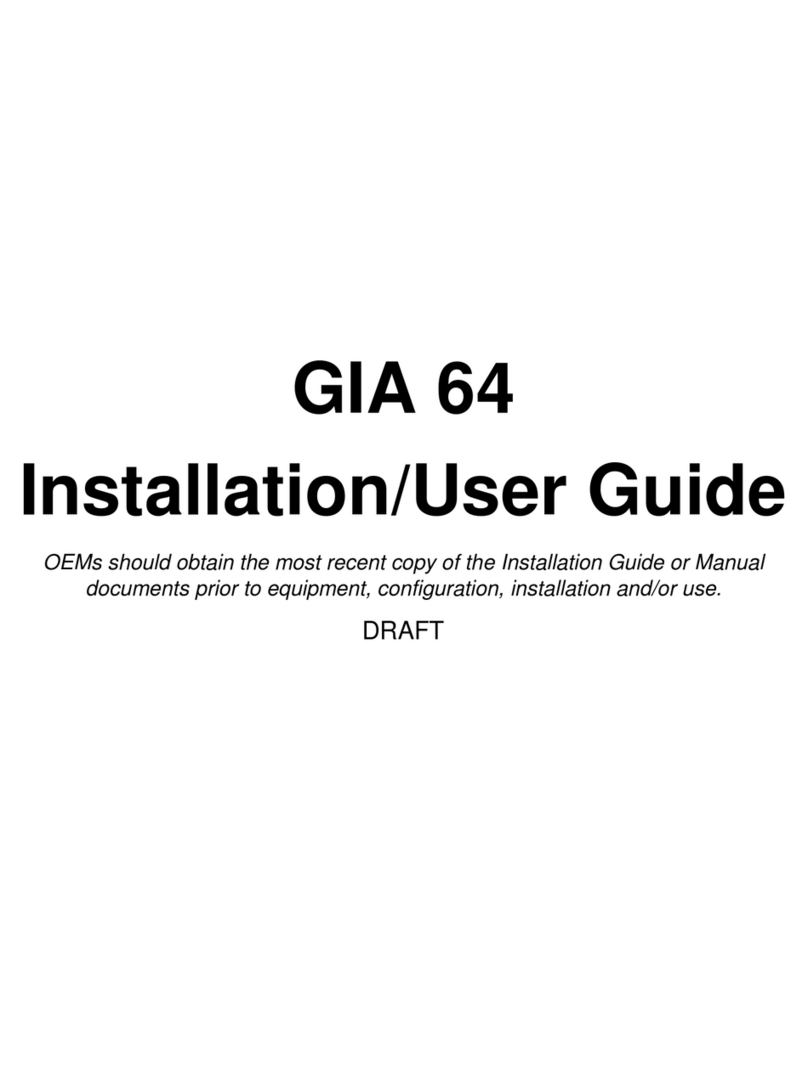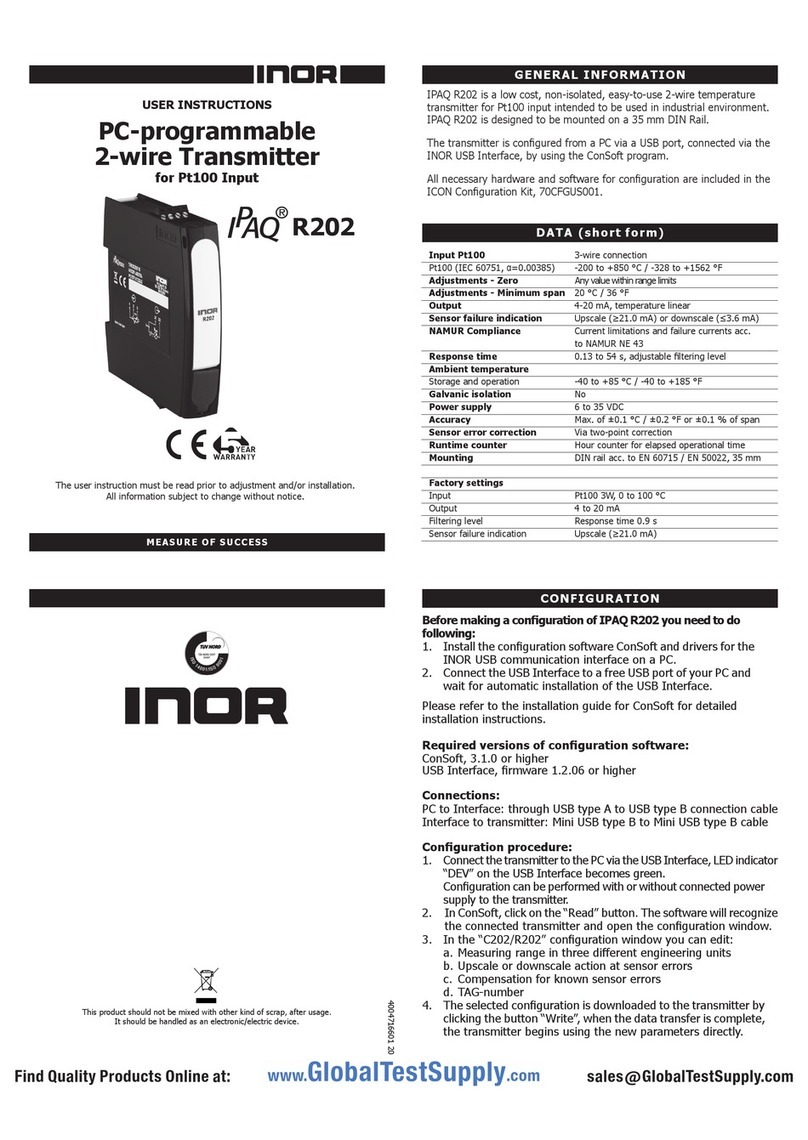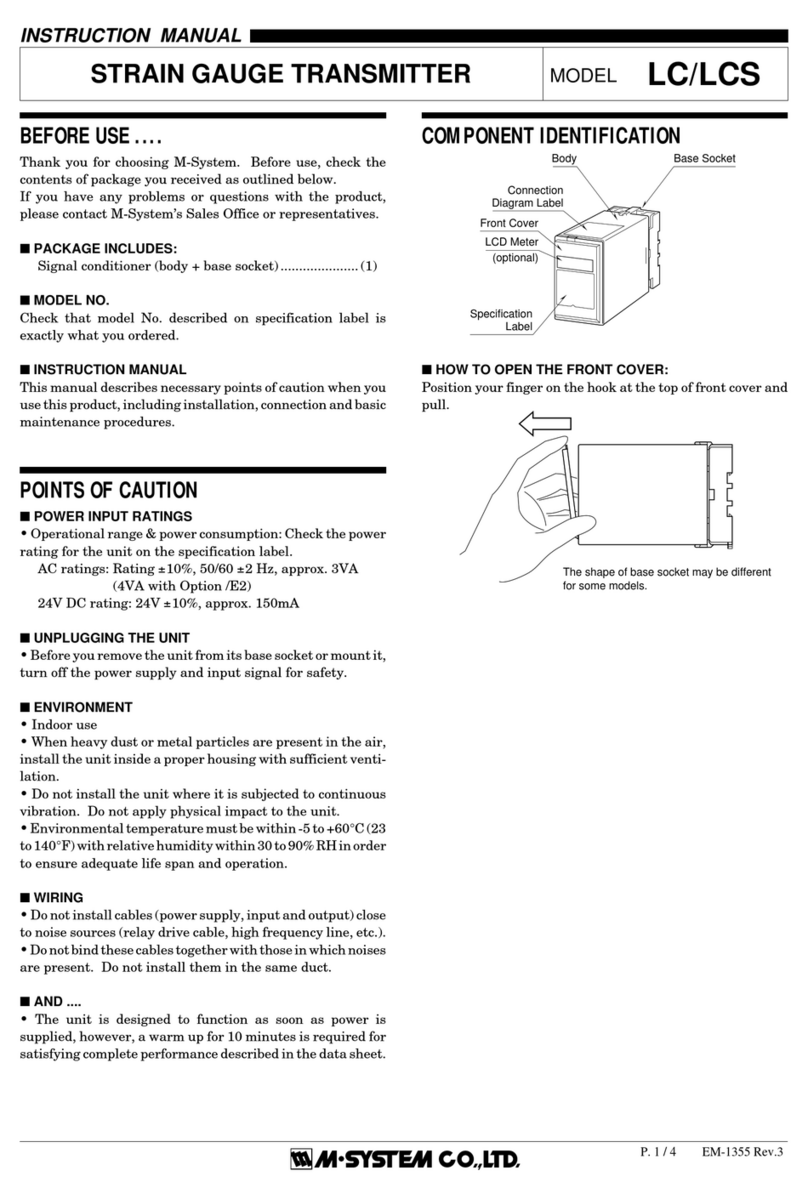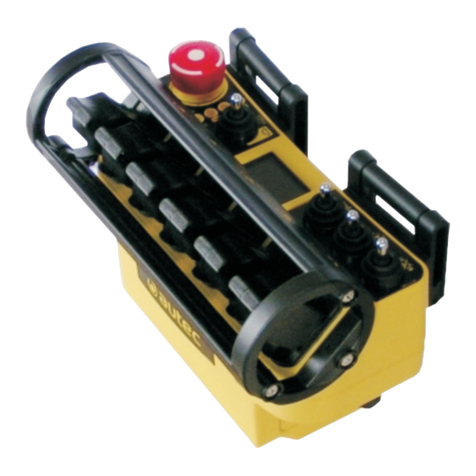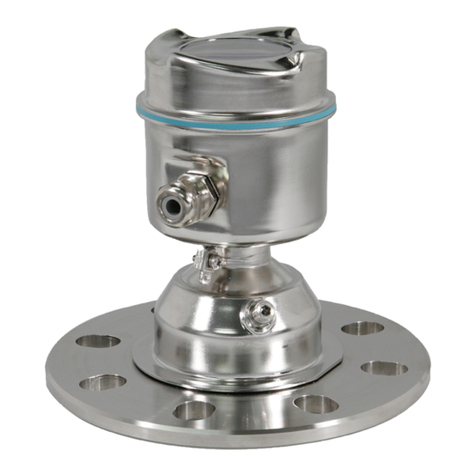Garmin DESCENT T1 User manual

DESCENT™T1
Owner’s Manual

© 2020 Garmin Ltd. or its subsidiaries
All rights reserved. Under the copyright laws, this manual may not be copied, in whole or in part, without the written consent of Garmin. Garmin reserves the right to change or improve its
products and to make changes in the content of this manual without obligation to notify any person or organization of such changes or improvements. Go to www.garmin.com for current updates
and supplemental information concerning the use of this product.
Garmin®, the Garmin logo, and ANT® are trademarks of Garmin Ltd. or its subsidiaries, registered in the USA and other countries. Descent™, Garmin Dive™, Garmin Express™, and Subwave™ are
trademarks of Garmin Ltd. or its subsidiaries. These trademarks may not be used without the express permission of Garmin. Other trademarks and trade names are those of their respective
owners.

Table of Contents
Introduction.....................................................................1
Installation and Setup.................................................... 1
Transmitter Position Tips............................................................ 1
Installing the Transmitter on Your Tank Regulator..................... 1
Installing the Transmitter on a High Pressure Hose
Extension.................................................................................... 2
Pairing the Transmitter with a Compatible Descent Dive
Computer.................................................................................... 2
Transmitter Settings............................................................... 3
Selecting Paired Transmitters to View on Your Dive Data
Screens.................................................................................. 3
Selecting the Gas Consumption Rate Metric......................... 3
Including Transmitters in Gas Consumption Calculations..... 3
Adding the Transmitters Data Screen to a Dive Mode.......... 3
Diving.............................................................................. 3
Dive Warnings............................................................................ 4
Starting a Dive on a Paired Descent Dive Computer................. 4
Viewing the Transmitter Data Screens....................................... 4
Transmitter Alerts....................................................................... 4
Enabling Lost Transmitter Alerts............................................ 5
Device Information......................................................... 5
Replacing the Descent T1 Battery.............................................. 5
Device Care................................................................................ 5
Cleaning the Transmitter........................................................5
Specifications..............................................................................5
Getting More Information............................................................ 5
Troubleshooting............................................................. 6
Updating the Transmitter Software Using Your Descent Dive
Computer.................................................................................... 6
My transmitter and watch lose connection underwater.............. 6
Adjusting the Transmitter Power Setting................................6
My transmitter battery is draining rapidly.................................... 6
Index................................................................................ 7
Table of Contents i


Introduction
WARNING
See the Important Safety and Product Information guide in the
product box for product warnings and other important
information.
Installation and Setup
CAUTION
To ensure proper setup and best performance, it is strongly
recommended that you complete the first time installation and
setup at a dive shop. You should fully test the transmitter
installation above and below water before using it during a dive.
Transmitter Position Tips
The transmitter communicates wirelessly with your compatible
dive computer. On the surface, it uses ANT® technology.
Underwater, it uses a sonar signal. Your body, drysuit, and dive
equipment can obstruct the signal, particularly while underwater.
For the best reception, all transmitters in your group should have
clear lines of sight to the dive computer. To help prevent
blocking the signal with your body or equipment, you should
follow these tips.
• You should install the transmitter at least 7 cm (3 in.) from
your body.
• You should install the transmitter on the same side of the
tank as the wrist wearing your dive computer. For example, if
you wear your dive computer on your left wrist, you should
install the transmitter on the left side of the tank regulator.
• For the best reception, you should wear the tank high on your
back. This allows the transmitter to have a clear line of sight
over your shoulders.
• If you wear your tank inverted with the regulator at the
bottom, you can use a high-pressure hose to relocate the
transmitter to have a clear line of sight over your shoulders.
• If you lose the signal from your transmitter, you should move
your arm until the signal is restored.
• If you lose the signal from another diver, you should change
your body position until the signal is restored. If your body is
between the dive computer and another diver, it may obstruct
the signal from that diver's transmitter.
Installing the Transmitter on Your Tank
Regulator
WARNING
Always use the pre-installed flow restrictor when using the
transmitter directly attached to your regulator. Always use the
included air spool when connecting the transmitter to a high
pressure hose extension (Installing the Transmitter on a High
Pressure Hose Extension, page 2). Using the transmitter
without either the flow restrictor or air spool could result in
serious injury or death from an air pressurization failure.
Before you install the transmitter on your tank regulator, you
should read the transmitter position tips and choose the port
position that provides the best line of sight to the dive computer.
To install the transmitter, you need a 5/8 in. (16 mm) open-ended
wrench.
The transmitter connects to a high pressure output port of the
first-stage regulator.
1Confirm the regulator is depressurized and detached from a
scuba cylinder.
2Remove the port plug from the high pressure output port of
the first-stage regulator.
3Confirm the flow restrictor is installed in the transmitter.
4Screw the transmitter onto the high pressure output port until
you feel resistance.
WARNING
Verify the installed transmitter does not physically interfere
with any hoses or other tank assemblies.
5Use a 5/8 in. (16 mm) wrench to tighten the transmitter.
Introduction 1

NOTICE
To prevent damage to the transmitter and possible loss of
function, do not overtighten. Do not use the transmitter
housing to tighten or loosen the transmitter.
Do not grip the regulator or the transmitter to move, carry, or
adjust the tank.
Installing the Transmitter on a High Pressure
Hose Extension
WARNING
Always use the pre-installed flow restrictor when using the
transmitter directly attached to your regulator (Installing the
Transmitter on Your Tank Regulator, page 1). Always use the
included air spool when connecting the transmitter to a high
pressure hose extension. Using the transmitter without either the
flow restrictor or air spool could result in serious injury or death
from an air pressurization failure.
Before you install the transmitter on a high pressure hose
extension certified to the EN 250:2014 standard, you should
read the transmitter position tips and choose a position that
provides the best line of sight to the dive computer.
To install the transmitter, you need two 5/8 in. (16 mm) open-
ended wrenches and a small flat screwdriver or flat-nose pliers.
The transmitter can connect to a high pressure hose extension
from the high pressure output port of the first-stage regulator.
1Use a screwdriver or pliers to carefully remove the flow
restrictor from the transmitter.
NOTICE
Use care when removing the flow restrictor to avoid
damaging the device.
2Insert the large end of the air spool into the transmitter.
3Confirm the regulator is depressurized and detached from a
scuba cylinder.
4Remove the port plug from the high pressure output port of
the first-stage regulator.
5Connect a high pressure hose extension to the high pressure
output port of the first-stage regulator.
6Screw the transmitter onto the high pressure hose extension
until you feel resistance.
WARNING
Verify the installed transmitter does not physically interfere
with any hoses or other tank assemblies.
7Use two 5/8 in. (16 mm) wrenches to tighten the transmitter,
placing one wrench on the transmitter and one wrench on the
hose fitting.
NOTICE
To prevent damage to the transmitter and possible loss of
function, do not overtighten. Do not use the transmitter
housing to tighten or loosen the transmitter.
Do not grip the regulator or the transmitter to move, carry, or
adjust the tank.
8Ensure the connection between the transmitter and hose
fitting is secure before using the device.
You must remove the air spool and reinstall the flow restrictor
before installing the transmitter on your tank regulator.
Pairing the Transmitter with a Compatible
Descent Dive Computer
To pair the transmitter, you must have a pressurized tank and
regulator.
The Descent T1 can transmit air pressure data to a compatible
Descent dive computer. For more information about compatible
dive computer models, go to the Descent T1 product page on
garmin.com.
Before you use the transmitter for the first time, you must pair it
with the dive computer. Out of the box, the transmitter is in low
2 Installation and Setup

power mode. You must wake the device from low power mode
to complete the pairing process.
NOTE: If a transmitter was packaged with your dive computer,
they are already paired.
1Install the transmitter on the first-stage regulator (Installing
the Transmitter on Your Tank Regulator, page 1).
2Gradually open the tank valve to pressurize the first-stage
regulator.
When the transmitter detects pressure, it wakes from low
power mode. The transmitter plays a tone when it wakes
from low power mode and is ready to pair.
3On the compatible Descent dive computer, hold MENU, and
select Dive Setup > Air Integration > Transmitters > Add
New.
The dive computer starts searching and displays a list of
nearby transmitters.
4From the list of transmitters, select the transmitter ID you
want to pair.
The transmitter ID is printed on the housing.
When the pairing process is complete, Connected appears on
the dive computer screen. The transmitter begins sending tank
pressure data, and it is ready to use on a dive. The next time the
transmitter and dive computer are turned on and within wireless
range, they connect automatically when you start a dive.
If you are diving with a group, you can pair up to 5 Descent T1
transmitters with the dive computer.
Transmitter Settings
You can customize the settings for paired transmitters prior to a
dive.
On the paired Descent dive computer, hold MENU, select Dive
Setup > Air Integration > Transmitters, and select a
transmitter.
Status: Enables a connection to the transmitter, and shows
current connection status.
Identify: Plays a tone on the selected paired transmitter. This
helps you to identify the transmitter without needing to look at
the transmitter ID printed on the transmitter housing.
Units: Sets the pressure units for your tank. The device defaults
to psi if your depth setting is in feet, and bar if your depth
setting is in meters.
Working Pressure: Sets how much pressure the tank has when
full. This value is used to determine the upper end of the
pressure gauge, and to calculate respiratory minute volume
(RMV) for tanks using psi units.
Reserve Pressure: Sets the threshold values for reserve
pressure and critical pressure alerts to appear on the dive
computer.
Volume: Allows you to enter the air volume of the tank. You can
use the Reset Volume option if you move the transmitter to a
different size tank.
NOTE: This value is required to calculate volumetric surface
air consumption (SAC) and respiratory minute volume (RMV)
(Selecting the Gas Consumption Rate Metric, page 3).
SAC/RMV/ATR: Enables the transmitter to be included in
volumetric surface air consumption (SAC), respiratory minute
volume (RMV), and air time remaining (ATR) estimates
(Including Transmitters in Gas Consumption Calculations,
page 3).
Set Transmit Power: Allows you to adjust the power setting if
your transmitter is losing connection with the paired dive
computer underwater.
About: Displays the transmitter ID, software version, and battery
status.
Name: Allows you to enter an easily identifiable name for the
transmitter.
Remove: Allows you to remove a paired transmitter.
Dive Terminology
Air time remaining (ATR): The time you may remain at the
current depth until an ascent at 9 m/min. (30 ft./min.) would
result in surfacing with the reserve pressure.
Pressure-based surface air consumption (PSAC): The
change in pressure over time, normalized to 1 ATM.
Respiratory minute volume (RMV): The change in gas volume
at ambient pressure over time.
Volumetric surface air consumption (SAC): The change in
gas volume over time, normalized to 1 ATM.
Selecting Paired Transmitters to View on Your Dive
Data Screens
You can view two paired transmitters at-a-glance on the primary
dive data screen. You can customize which paired transmitters
appear on the screen. By default, the first and second
transmitters that you pair appear.
1On the paired Descent dive computer, hold MENU.
2Select Dive Setup > Air Integration > Display Setup.
3Select a field to customize.
4Select a paired transmitter.
Selecting the Gas Consumption Rate Metric
1On the paired Descent dive computer, hold MENU.
2Select Dive Setup > Air Integration > Display Setup > Gas
Consumption Rate.
3Select an option.
NOTE: The dive computer can estimate volumetric surface
air consumption (SAC) or respiratory minute volume (RMV)
only if the air volume of the tank is entered in the dive
computer (Transmitter Settings, page 3). The dive computer
can estimate pressure-based surface air consumption
(PSAC) with or without the air volume of the tank.
Including Transmitters in Gas Consumption
Calculations
Gas consumption and air time remaining estimates are
calculated using the tank pressure from the included
transmitters. By default, the first transmitter that you pair with
your compatible dive computer is included. You can include
additional paired transmitters in gas consumption calculations.
1On the paired Descent dive computer, hold MENU.
2Select Dive Setup > Air Integration > Transmitters.
3Select a paired transmitter.
4Select the SAC/RMV/ATR toggle switch to include the
transmitter in gas consumption calculations.
5If necessary, repeat steps 2 through 4 to include additional
paired transmitters in gas consumption calculations.
Adding the Transmitters Data Screen to a Dive Mode
You can add the transmitters data screen to the data screen
loop for a dive mode.
1On the paired Descent dive computer, hold MENU.
2Select Activities & Apps.
3Select a dive mode, and select the dive mode settings.
4Select Data Screens > Add New > Transmitters.
Diving
You can use a compatible Descent dive computer paired with
your Descent T1 transmitter to start a diving activity. See the
Descent Series Owner's Manual for more information.
Diving 3

Dive Warnings
WARNING
• This device is for use by certified divers only.
• This device should not be used as the only source of
pressure information. Always use backup instruments,
including a depth gauge, submersible pressure gauge, and
timer or watch.
• Make sure that you fully understand the use, displays, and
limitations of your device. If you have questions about this
manual or the device, always resolve any discrepancies or
confusion before diving with the device. Always remember
that you are responsible for your own safety.
• The dive computer can calculate your surface air
consumption rate (SAC) and air time remaining (ATR). These
calculations are an estimate and should not be relied on as
the only source of information.
• Perform pre-dive safety checks, such as checking proper
device function and settings, display function, battery level,
tank pressure, and bubble checks to check hoses for leaks.
• If a tank pressure warning or battery warning appears on the
dive computer, terminate the dive immediately and safely
return to the surface. Disregarding the alarm may result in
serious injury or death.
• For safety reasons, you should never dive alone. Dive with a
designated buddy. You should also stay with others for an
extended time after a dive, because the potential onset of
decompression sickness (DCS) may be delayed or triggered
by surface activities.
• This device is not intended for commercial or professional
dive activities. It is for recreational purposes only.
Commercial or professional dive activities can expose the
user to extreme depths or conditions that increase the risk of
DCS.
• The transmitter is not an oxygen cleaned product. Do not use
the transmitter with anything greater than 40% oxygen.
Starting a Dive on a Paired Descent Dive
Computer
1On the paired Descent dive computer, press START from the
watch face.
2Select a dive mode.
See the owner's manual for your Descent dive computer for
more information about supported dive modes.
3Press START until the primary dive data screen appears.
The primary dive data screen displays up to two paired
transmitters (Selecting Paired Transmitters to View on
Your Dive Data Screens, page 3).
NOTE: You can use this screen to confirm your paired
transmitters are connected to your dive computer prior to
starting your dive.
4Descend to start your dive.
The activity timer starts automatically when you reach a
depth of 1.2 m (4 ft.).
5Press DOWN to scroll through the additional data screens.
When you return to the surface, the device automatically ends
and saves the dive after one minute has elapsed (by default).
You must depressurize your regulator to return the transmitter to
low power mode.
Viewing the Transmitter Data Screens
1During a dive, press DOWN on your paired Descent dive
computer to view the transmitter data screen.
The gas consumption estimate for the selected transmitters.
NOTE: You can customize the transmitters used for gas
calculations (Including Transmitters in Gas Consumption
Calculations, page 3).
The air time remaining (ATR) estimate for the selected
transmitters.
Your primary and secondary transmitters and their tank
pressure values.
NOTE: You can customize which transmitters are displayed
(Selecting Paired Transmitters to View on Your Dive Data
Screens, page 3).
2From the transmitter data screen, press START to view
additional paired transmitters in the network.
Transmitter Alerts
Alert
Message
Cause Device Action
None Your paired dive computer
has lost communication
with the transmitter for 30
seconds.
The tank pressure value
flashes yellow.
%1 is below
reserve
pressure.
Your tank pressure is below
the reserve pressure level.
"%1" is replaced with the
transmitter name.
The tank pressure value
turns yellow.
The paired dive computer
vibrates and plays a
warning tone.
%1 pressure
is critically
low.
Your tank pressure is below
the critical pressure level.
"%1" is replaced with the
transmitter name.
The tank pressure value
flashes red.
The paired dive computer
vibrates and plays a
warning tone.
4 Diving

Alert
Message
Cause Device Action
%1 has a
low battery.
Fewer than 20 hours of dive
time remain. "%1" is
replaced with the
transmitter name.
The transmitter name
flashes BATT. LOW when
the battery is critically low.
The paired dive computer
vibrates and plays a
warning tone.
NO COMMS Your paired dive computer
has lost communication
with the transmitter for 60
seconds.
The transmitter name
flashes NO COMMS,
dashed lines replace the
tank pressure value, and
the tank pressure value
flashes red.
The paired dive computer
vibrates and plays a
warning tone if connection
alerts are enabled.
Enabling Lost Transmitter Alerts
Your paired dive computer can lose communication with the
transmitter when the transmitter is out of range, when the
transmitter signal is blocked by your body or that of another
diver, and when the transmitter loses battery power. You can
enable an alert that notifies you when your paired dive computer
has lost communication with the transmitter for 60 seconds.
1On the paired dive computer, hold MENU.
2Select Dive Setup > Air Integration > Connection Alert.
Device Information
Replacing the Descent T1 Battery
NOTICE
You should purchase a replacement battery only from a high-
quality manufacturer and a reputable vendor. Using a low quality
battery could result in poor product performance and reduced
battery life, especially at low temperatures. Do not use
rechargeable batteries. Rechargeable batteries may have a
higher voltage specification and can cause permanent damage
to the device.
To replace the battery, you need a coin or flat screwdriver, a
new 3 V CR123A lithium battery, and waterproof silicone
grease. You may also need a replacement battery cap
accessory.
The transmitter is powered by a 3 V CR123A lithium battery. A
battery is pre-installed at the factory. You must carefully follow
the battery replacement instructions to preserve the transmitter's
waterproofing.
1Insert a coin or flat screwdriver into the slot , and rotate
counter-clockwise to unscrew the battery cap.
2Remove the battery cap and battery.
3Insert the new battery in the transmitter, with the positive pole
facing into the transmitter and the negative pole facing the
battery door.
4Inspect both gaskets to verify they are clean, undamaged,
and fully seated in the grooves.
If the gaskets appear worn or damaged, you can purchase a
replacement battery cap kit, including a cap, pre-installed
gaskets, and silicone grease. Go to the Descent T1 product
page on garmin.com to purchase accessories.
5Apply a thin layer of waterproof silicone grease to both
gaskets.
6Replace the battery cap into the transmitter, and fully tighten
it.
Device Care
NOTICE
Do not grip the regulator or the transmitter to move, carry, or
adjust the air tank.
Do not remove the safety plug from the base of the transmitter.
Do not use a sharp object to clean the device.
Avoid chemical cleaners, solvents, and insect repellents that can
damage plastic components and finishes.
Thoroughly rinse the device with fresh water after exposure to
chlorine, salt water, sunscreen, cosmetics, alcohol, or other
harsh chemicals. Prolonged exposure to these substances can
damage the case.
Avoid extreme shock and harsh treatment, because it can
degrade the life of the product.
Do not store the device where prolonged exposure to extreme
temperatures can occur, because it can cause permanent
damage.
Discontinue use if the device is damaged or if it is stored at a
temperature outside the specified storage temperature range.
Discontinue use if there is water ingress into the battery
compartment. Even small amounts of water can cause corrosion
of the electrical contacts.
Cleaning the Transmitter
1After each dive, rinse the transmitter with fresh water to
remove salt and debris.
2If necessary, clean the transmitter with a soft cloth.
Specifications
Battery 3 V CR123A lithium
Battery life Up to 100 hr.
Thread type 7/16 in. (20 UNF)
Normal operating temperature From -20 to 60°C (from -4 to
140°F)
Underwater operating temperature From 0 to 40°C (from 32 to 104°F)
Storage temperature From -30 to 70°C (from -22 to
158°F)
Wireless frequency 2.4 GHz @ 0 dBm
Surface transmission range (ANT
wireless technology)
Up to 10 m (33 ft.)
Underwater transmission range
(sonar)
Up to 10 m (33 ft.)
Water rating 11 ATM1
Pressure rating 300 bar (4351 psi)
Inspection interval Inspect parts before each use for
damage. Replace parts as
needed.2
Getting More Information
You can find more information about this product on the Garmin®
website.
• Go to support.garmin.com for additional manuals, articles,
and software updates.
• Go to buy.garmin.com, or contact your Garmin dealer for
information about optional accessories and replacement
parts.
1 The device withstands pressure equivalent to a depth of 110 m. For more
information, go to garmin.com/waterrating.
2 Aside from normal wear and tear, performance is not affected by aging.
Device Information 5

Troubleshooting
Updating the Transmitter Software Using
Your Descent Dive Computer
Before you can update the software, you must pair your Descent
T1 transmitter to a compatible Descent dive computer.
1Select an option to sync your dive computer:
• Sync your dive computer with the Garmin Dive™ app.
• Connect the dive computer to your computer using the
USB cable, and sync with the Garmin Express™
application.
Garmin Dive and Garmin Express automatically look for
software updates. When you sync with Garmin Express, the
update is applied immediately to your dive computer. When
you sync with Garmin Dive, you will be prompted to apply the
update at a later time.
2Install the transmitter on the first-stage regulator (Installing
the Transmitter on Your Tank Regulator, page 1).
3Gradually open the tank valve to pressurize the first-stage
regulator.
When the transmitter detects pressure, it wakes from low
power mode and plays a tone.
4On the paired Descent dive computer, hold MENU, select
Dive Setup > Air Integration > Transmitters, and select
your transmitter.
5Wait for the transmitter to connect to your dive computer.
Connected appears on the dive computer screen.
6Select Software Update.
NOTE: This option may take up to a minute to appear while
the dive computer determines the transmitter's software
version and battery status.
7Verify the transmitter ID when prompted.
The transmitter ID is printed on the housing.
8Keep the dive computer near the transmitter until the
software update is complete.
My transmitter and watch lose connection
underwater
If your watch and transmitter communicate on the surface but
lose communication underwater, you can try these tips.
• Increase the transmitter power setting (Adjusting the
Transmitter Power Setting, page 6).
• Install the transmitter on a high pressure hose extension to
improve the line of sight between the transmitter and the
watch (Installing the Transmitter on a High Pressure Hose
Extension, page 2).
• Follow the transmitter position tips to achieve the best line of
sight between the watch and the transmitter (Transmitter
Position Tips, page 1).
Adjusting the Transmitter Power Setting
NOTE: Increasing the power setting increases the audible noise
from the transmitter and decreases its battery life.
1Hold MENU.
2Select Dive Setup > Air Integration > Transmitters.
3Select a paired transmitter.
4Select Set Transmit Power.
5Enter the transmitter ID.
NOTE: The transmitter ID is printed on the housing.
6Select an option.
My transmitter battery is draining rapidly
If your transmitter battery is draining faster than the expected
battery life (Specifications, page 5), you should make sure the
transmitter is returning to low power mode after a dive.
When you return to the surface after a dive, depressurize
your regulator.
The installed transmitter enters low power mode after two
minutes have elapsed.
6 Troubleshooting

support.garmin.com
GUID-46177B6F-52F5-4DA5-B0C5-84CE303DDB49 v1October 2020
Table of contents
Other Garmin Transmitter manuals
Popular Transmitter manuals by other brands
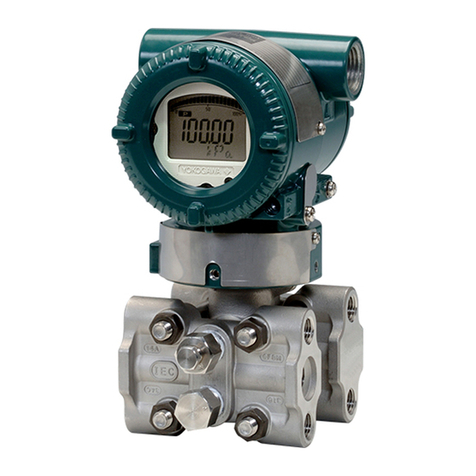
YOKOGAWA
YOKOGAWA DpharpEJX vigilantplant EJX210A user manual

Siemens
Siemens miniTek user guide
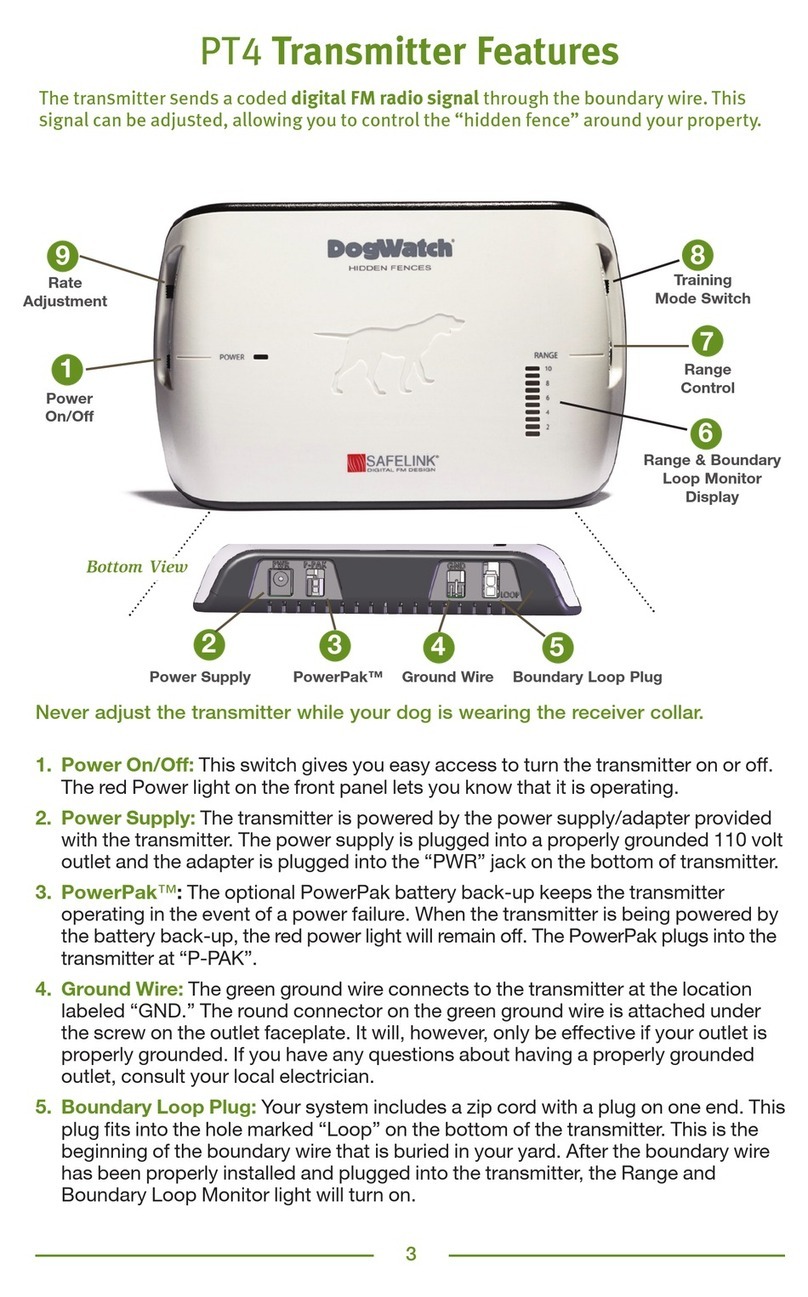
DogWatch
DogWatch PT4 manual

Suntex
Suntex PC-3110-RS Operation manual
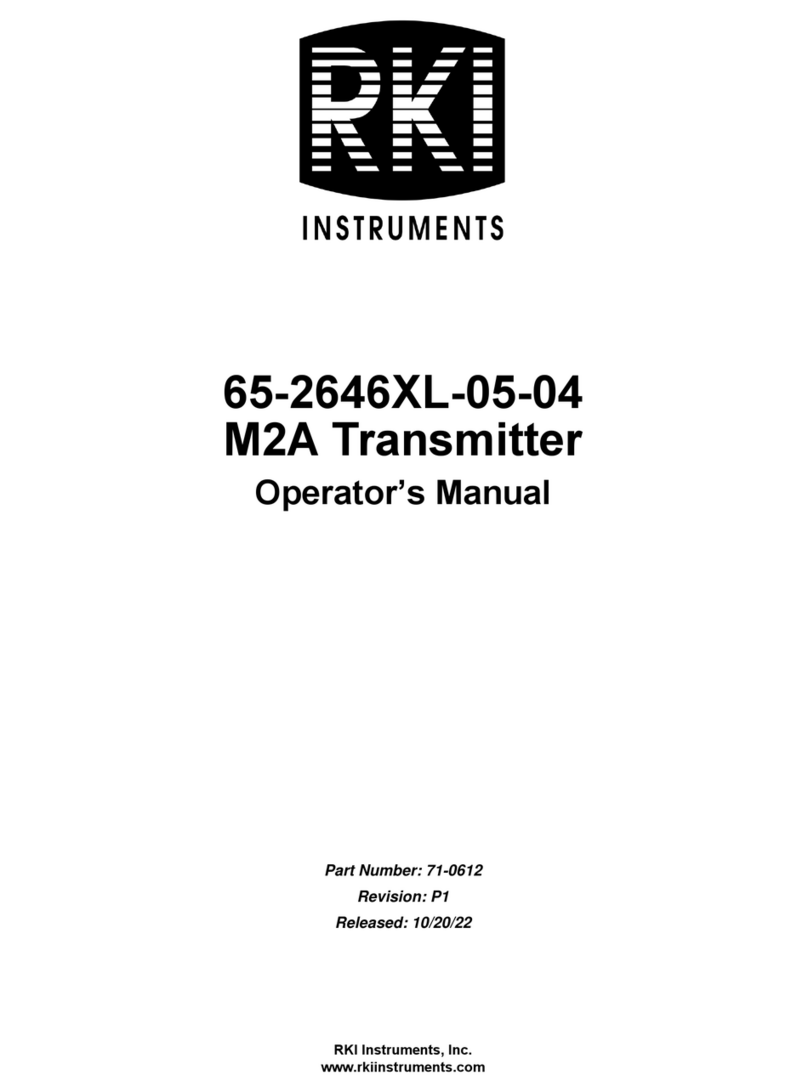
RKI Instruments
RKI Instruments 65-2646XL-05-04 Operator's manual

PSM
PSM APT 500 Series Installation, Operation & Maintenance Instruction Manual

Omega Engineering
Omega Engineering CYTX231 Series user guide
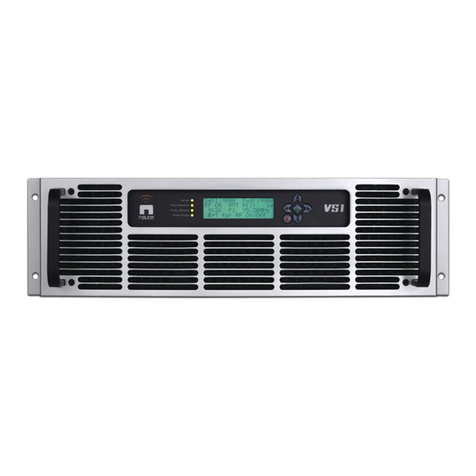
Nautel
Nautel VS1 installation manual

Burkert
Burkert SE58 M operating instructions
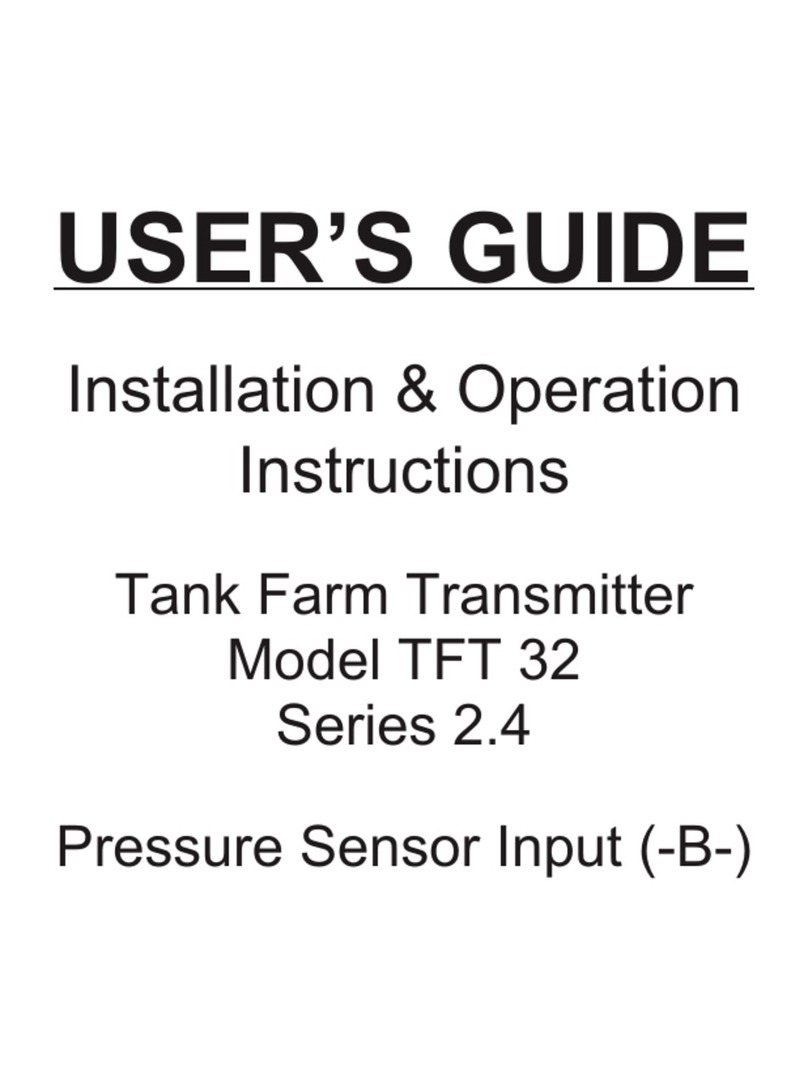
Greyline Instruments
Greyline Instruments Tank Farm Transmitter TFT32 user guide
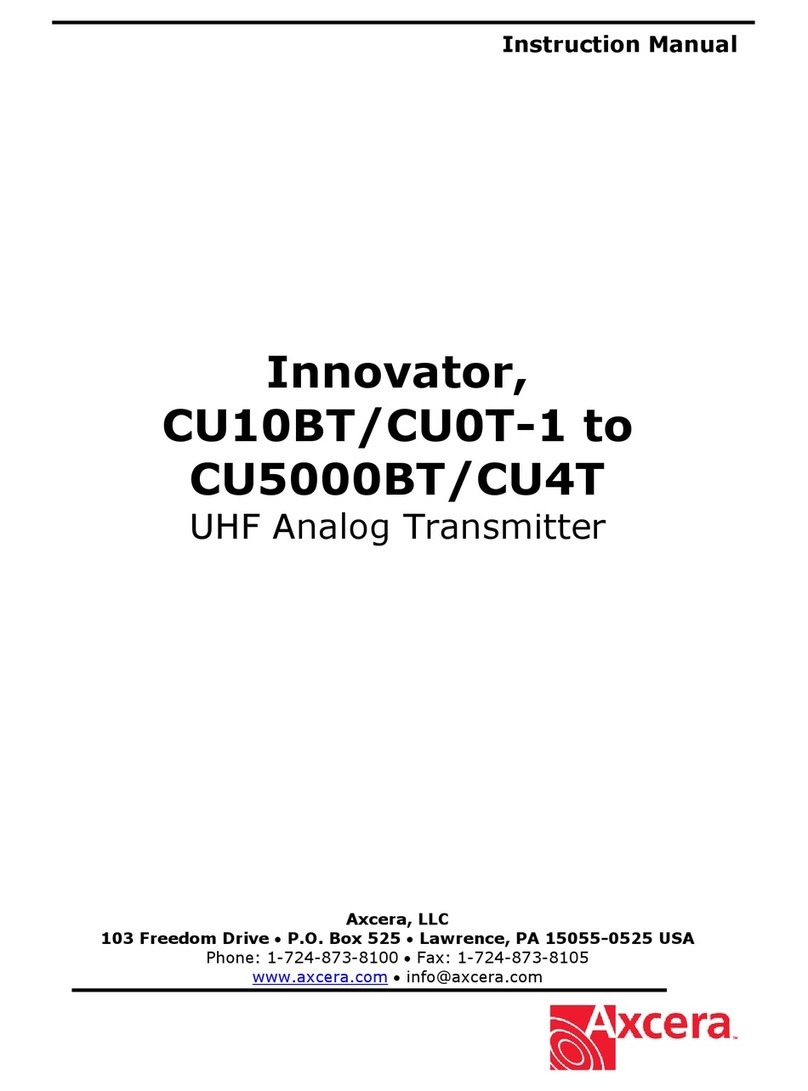
Axcera
Axcera Innovator CU10BT/CU0T-1 instruction manual
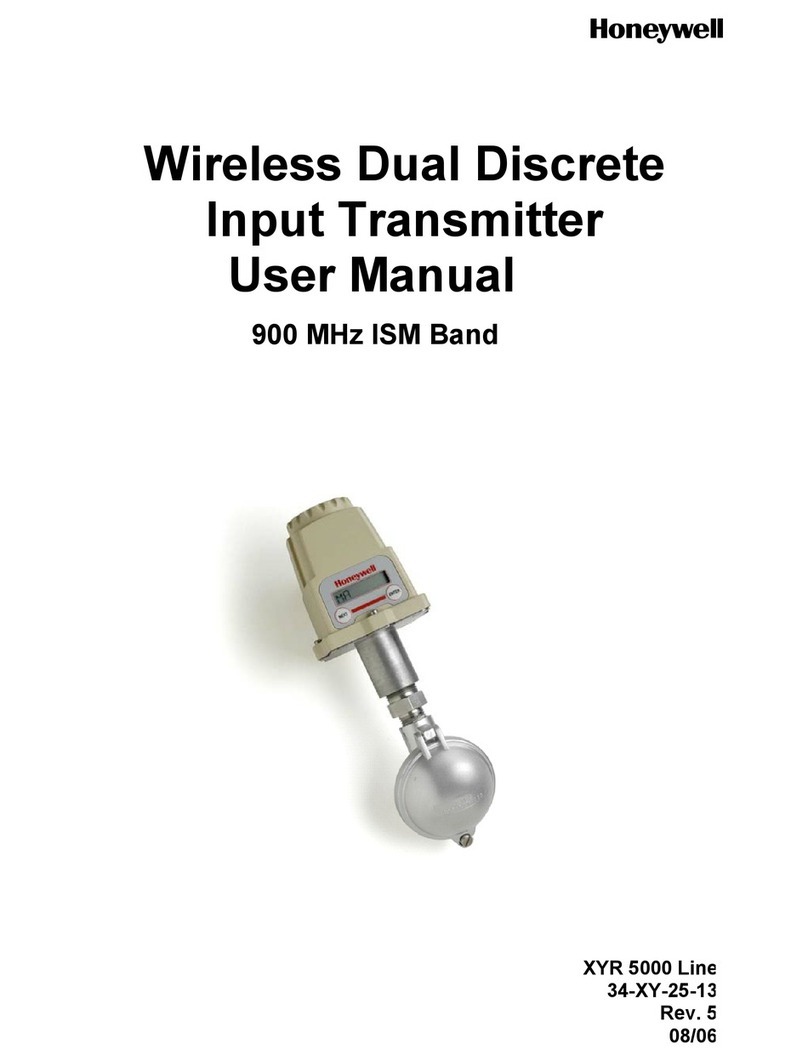
Honeywell
Honeywell XYR 5000 Series user manual

